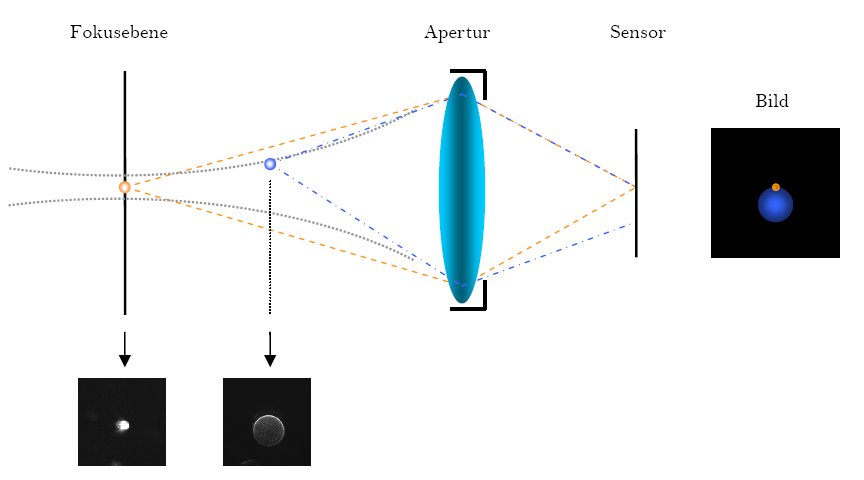Spatial filter measuring technique / imaging techniques
The spatial filter technique, having a long tradition at the Institute of General Electrical Engineering, uses grid-like structures in the image plane of an optic portion to produce a signal with a frequency proportional to velocity. The grids can also be realized via CCD and CMOS arrays. The advantage of this is that the grid structures can be dynamically changed and adapted spatial filters are possible. When the addition of certain pixels for the generation of the spatial filter signal is already implemented on the sensor chip, very high frame rates can be achieved and allow for a continuous online analysis. The project investigates options for a two-component velocity determination and for the characterization of surfaces.
Optical measurement techniques to determine the position of particles
In addition to the laser-Doppler technique, the phase-Doppler technique and the time-shift technique, image-processing techniques like particle-image and particle-tracking velocimetry are employed at the Institute of General Electrical Engineering. The last-mentioned are characterized, as opposed to the first-mentioned point measurement, by areally (2D) and spatially (3C/2D or 3C/3D) expanded measuring volumes. When determining the third component (depth position of a particle), the defocussing, i.e. the expansion of the particle image can be used when using only one camera [1]. Figure 1 shows the basic connection between depth position of a particle and the resulting image on an areal sensor (camera). The determination of the depicted point size and the x-y-position can, among others, be defined via the Hough-Transformation under the assumption of circles [2].
Research group imaging techniques
- Dr.-Ing. Martin Schaeper
- Dr.-Ing. André Kleinwächter
- Dr.-Ing. Eric Ebert
- Dipl.-Ing. Robert Kostbade
- M. Sc. Tino Steinmetz

